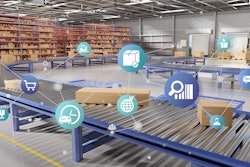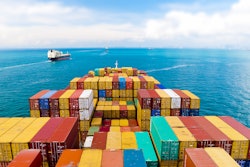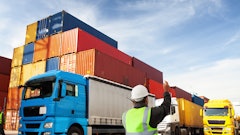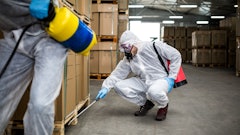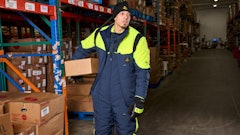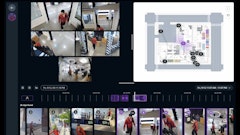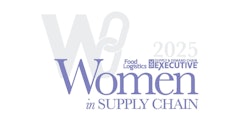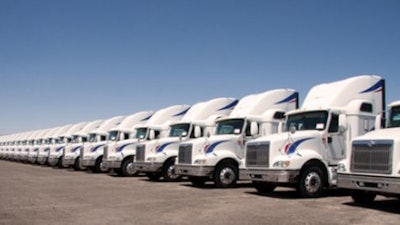
When 2021 hit, the world was ready for the New Year. Even if it brought with it a New Normal -- new way of doing business, a new way to shop for groceries and more -- the turning of the calendar meant putting a year of supply chain disruptions, restaurant closures and constant pivoting behind us.
But, then, on March 23, a stranded Evergreen container ship blocked navigation in Egypt’s Suez Canal, setting the stage for what would be a slew of supply chain disruptions after supply chain disruptions.
Suddenly, 2021 was quickly becoming a mirrored reflection of the year prior.
Then came the ransomware attacks, internet outages, container ships stuck at bay, bridge closures, driver shortages, ingredient shortages, natural disasters and more.
The hits just kept on hitting.
And, industry experts are already showing signs of struggle for 2022 into 2023, as routes to import/export remain clogged, ports continue to be backed up, cost of doing business increases and the labor shortage exists.
That’s because supply chains are messy. And, they’re only going to get worse before they get better.
In Food Logistics’ Nov/Dec 2021 issue, editor-in-chief Marina Mayer talks with several industry experts about the state of the supply chain and what’s in store for 2022.
Here’s an interview with Aaron Hageman, CEO, Delivery Drivers, Inc., talks workers' benefits and the importance of worker safety, with excerpts publishing in Food Logistics’ Nov/Dec 2021 issue. [CLICK HERE to read the article in full].
Food Logistics: 2021 started off with supply chain disruption after supply chain disruption. From the Suez Canal blockage and natural disasters to ransomware attacks and an industry-wide labor shortage, the supply chain industry is having to prove its resiliency over and over again. Looking into 2022, what does the state of the supply chain look like?
Aaron Hageman: Growing pains, and no we don’t mean the 80s TV show. Many customers and businesses were forced into the delivery world thanks to the pandemic, and now that it’s here, the demand for more products being delivered will continue to rise. Increasing demand is tough enough - add on labor shortages, cargo ships sitting and waiting to unload and a natural disaster or two and we have some work to do.
Food Logistics: The cold food chain continues to face a host of risk/security challenges. What can companies be doing now to adapt for the future?
Hageman: When delivering an expiring product, the challenge is to properly balance the inventory and supply against our delivery volume and labor availability. Having workforce flexibility has proven to be a key strategy in managing this risk; at DDI, we have been leaning into more and more technology that will connect active drivers in the area with the ebbs and flows of cold chain demands. This way we can flex up and down to better support the unique demands that a “cold” supply chain presents.
Food Logistics: In terms of transportation, what are some of the trends you’re seeing for 2022? How do emerging technologies like blockchain, Internet of Things, cloud-based, etc. play a role in the evolution of transportation in the cold food chain?
Hageman: Drivers first. The conversation around the gig economy is far from over, and we will talk about this a lot in 2022. What is my state’s definition of a 1099 worker? Independent contractor rights, security and 1099 worker benefits are all pieces of the labor puzzle where we anticipate a lot of change.
Additionally, the tides of our customers’ delivery demands will continue to rise next year and there will be more growth. With more demand than ever, we are starting to see the next round of technology solutions that allow our retail partners to leverage many different omnichannel fulfillment solutions. One size rarely fits all these days for retailers - particularly in cold chain fulfillment where we cannot stack orders on top of each other.
Food Logistics: Let’s talk supply chain visibility. What is your company – or what should companies – be doing to improve their own supply chain visibility?
Hageman: There are two perspectives here when I think about visibility -- visibility into our operational performance and visibility into workforce analytics.
To the first issue of operational performance, we need to continue to leverage all the data and analytics at our disposal. The goal is to do more orders, in less time, more efficiently, for less overall costs. Our clients are continually pushing their e-commerce and dispatch technology partners for more and more dashboard analytics visibility to hit these metrics.
Secondarily, workforce analytics are essential in a competitive labor market. We have to know what kind of drivers fit our companies to impact retention, all key metrics around driver recruiting and where the points of attrition are, as well as driver economic data. As an example, tracking earnings/trip and earnings/hour within our operating zones often gives us the information we need to make positive changes.
Food Logistics: The labor shortage is a real thing, and it’s impacting several facets of the supply chain. What is your company – or what should companies – be doing to hire, onboard and retain good quality supply chain workers?
Hageman: Speed, technology, automate and integrate.
At DDI, we focus on connecting drivers to a variety of opportunities in their area and helping them maximize their available time to create earnings. The first aspect of this is speed. In such a competitive market, you need to engage workers swiftly and leverage technology to get them onboarded and earning quickly. Independent contractors want to be valued for the work they accomplish and have their time and skills utilized to maximize their earnings potential.
Food Logistics: The COVID-19 pandemic put extra emphasis on food safety and worker safety. What is the state of food safety and worker safety going into the New Year?
Hageman: Next to earnings opportunities and business-related costs like the cost of fuel, safety is a regular topic amongst frontline gig economy workers.
The thing is, “driver safety” is not a simple topic. There are many things that drive this conversation, including the need to carry cash (i.e. does your operating platform allow for or even promote cashless transactions). What options and choices do drivers have around cameras in the vehicles? Many drivers in our network have a desire to not use car signs or clothing that may identify them as a target. And of course, no conversation about driver-safety is complete without a comprehensive roundtable around COVID.
If you haven’t already, start the conversation with your crews and find out how it manifests itself on the front lines day-to-day.
Food Logistics: When it comes to grocery retail shopping and/or foodservice establishments, what are some trends you see sticking around post-pandemic, and which ways of doing business will somewhat go away?
Hageman: Convenience is sticky. When our customers get a taste of the convenience of delivery (no matter what the product) they don’t want to let go. It is no longer “if” your store or restaurant delivers but “how.” The fight to own the customer, own your brand experience and own the data behind everything has begun. Businesses of all kinds must consider their e-commerce delivery strategies as their brick-and-mortar approaches decline. It is non-negotiable that the retail world must engage with drivers and build programs to improve retention, pursue strategies for shorter delivery windows and increase control of the delivery experience.
[CLICK HERE to read the article in full].






